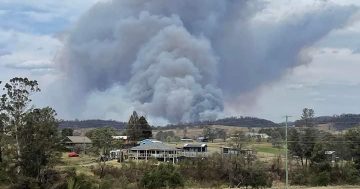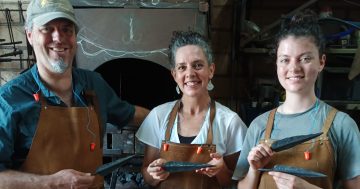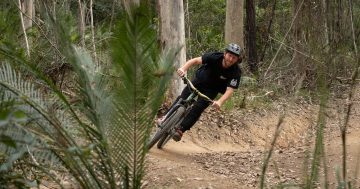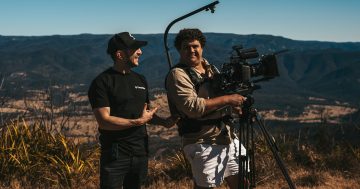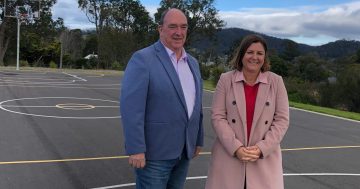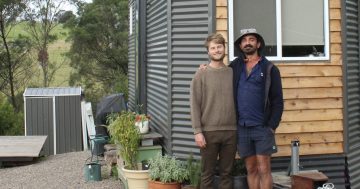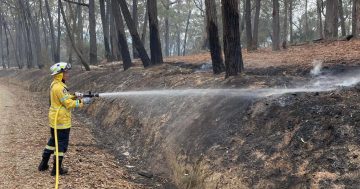
BlazeAid Cobargo volunteers get to work installing a fence in the Cobargo region. Photo: Supplied.
You don’t have to ask too many residents in the Bega Valley devastated by the 2019/202 bushfires to discover that there is no quick recovery from the disaster.
With this month marking a year since the last fires were extinguished, it’s a timely reminder of the devastation left in their wake which claimed four lives and impacted about 60 per cent of the Bega Valley Shire.
Starting on New Years Eve 2019 and lasting more than 65 days, the region lost 466 homes and a further 1000 sheds.
According to the Bega Valley Shire Council, by late February this year 92 development applications for fire-affected homes had been lodged with 80 approved and 13 constructed to a stage where the homes could be occupied.
Chairperson of the Social Justice Advocates of the Sapphire Coast Mick Brosnan said many people were still living “extremely rough”, saying it was “unsatisfactory” that living in caravans had become the norm.
“But you could safely say most have at least a caravan, while Minderoo Pods are out there and sheds are being built,” he said.
“It’s just a very, very slow process and some are a long way behind.”
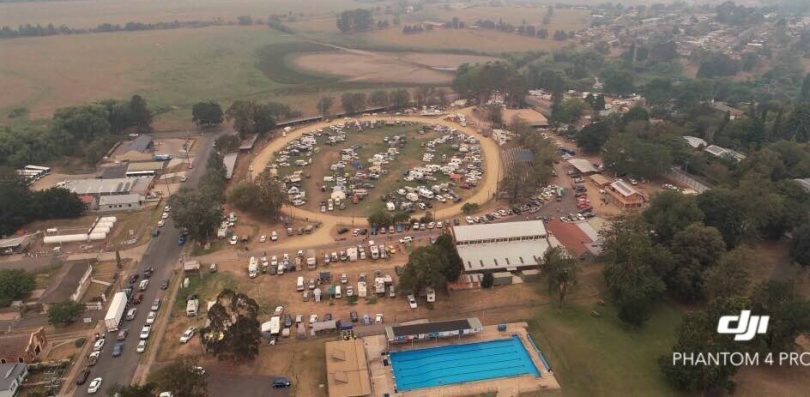
An aerial shot of evacuees at the Bega Showgrounds during the 2019/2020 bushfire. Photo: Cobargo/Bermagui noticeboard Facebook.
Since the fires started the Social Justice Advocates have, with the help of numerous actual and financial donations, delivered about 65 caravans to Bega Valley residents impacted by the fires.
Mr Brosnan said the Advocates’ role in recovery had now shifted from supplying caravans to joining with Rotary, council, Catholic services and St Vincent de Paul Society to support a team focused on sanitation – providing water, toilets and showers – as well as sheds.
“Only on the odd occasion are we taking a caravan to a fire-affected property,” he said.
“One common factor that has to be noted is the people who are without water tanks are considerably stressed and most anxious.”
Bega Valley Mayor Russell Fitzpatrick said the largest challenge faced by those seeking to rebuild their homes was a shortage of available builders who are booked solid for six to eight months.

Cobargo’s main street seen on 28 June last year. Photo: Michael Weaver.
“Recovery has been going slow, but we expected that because of COVID and other things,” he said.
“I think everyone is tired and worn out – but that’s only natural with what we’ve been through. Most people are trying to be optimistic and trying to work together as a community.”
BlazeAid, a volunteer-based organisation that rebuilds fences damaged in a natural disaster, has been funded to remain in the Cobargo community until August. Of the 338 properties that have been registered with the group, at least 146 have been finished.
“Most of the big fencing jobs are done but Cobargo has a lot of smaller holdings and lifestyle blocks so we have a lot of smaller holdings still to go,” BlazeAid Cobargo camp coordinator Jude Turner said.
With the countdown to August having begun, she was unsure if her volunteers would have time to re-fence all remaining properties before they left.
“I do believe of all the properties needing help, some of them will never be ready for one thing or another,” she said.
“So I personally don’t believe we will finish every fence, but I think we will go a long way towards it.
“By the time August comes around we will have been here for 19 months, and that’s the longest continuing commitment BlazeAid has made to any community.”
Ms Turner agreed it had been a long, challenging year for fire-affected families in the region.
“A lot of people haven’t really progressed in 12 months for one reason or another and I think they still need support like BlazeAid can give,” she said.
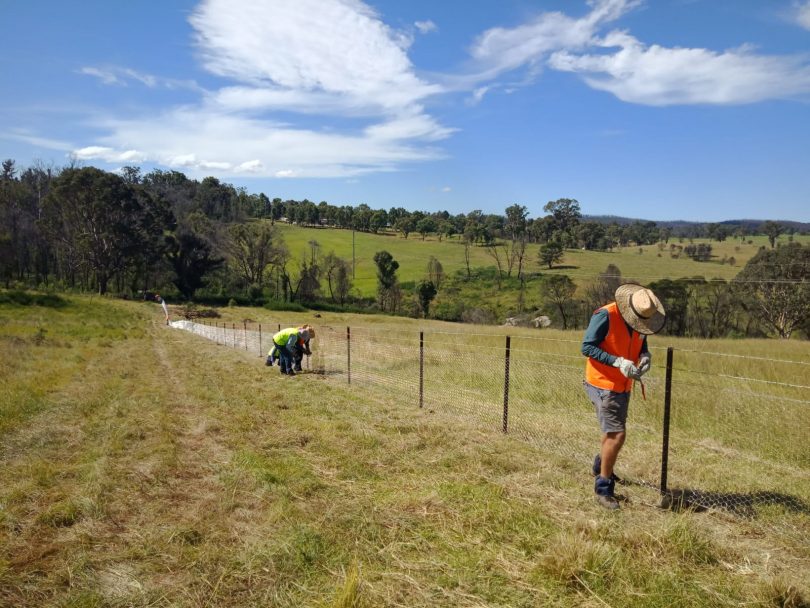
BlazeAid Cobargo volunteers get to work installing a fence in the Cobargo region. Photo: Supplied.
Bega council’s Recovery, Rebuilding and Resilience project lead Chris Horsburgh said rebuilds were occurring, but evidence from previous disasters and what occurred in the Bega Valley after the fires showed rebuilding and recovery was an individual journey that could take some time to work through.
He said council was aware many residents who lost their homes were still living in temporary accommodation while assessing their options for rebuilding while some were choosing to sell their land rather than rebuild.
“Temporary accommodation includes a rented property or a caravan or other temporary dwelling such as a Minderoo pod on their property,” Mr Horsburgh said.
“Council is aware that some residents who lost their home are living elsewhere and visit their property intermittently.”






